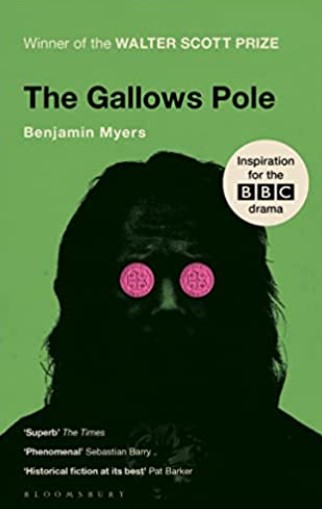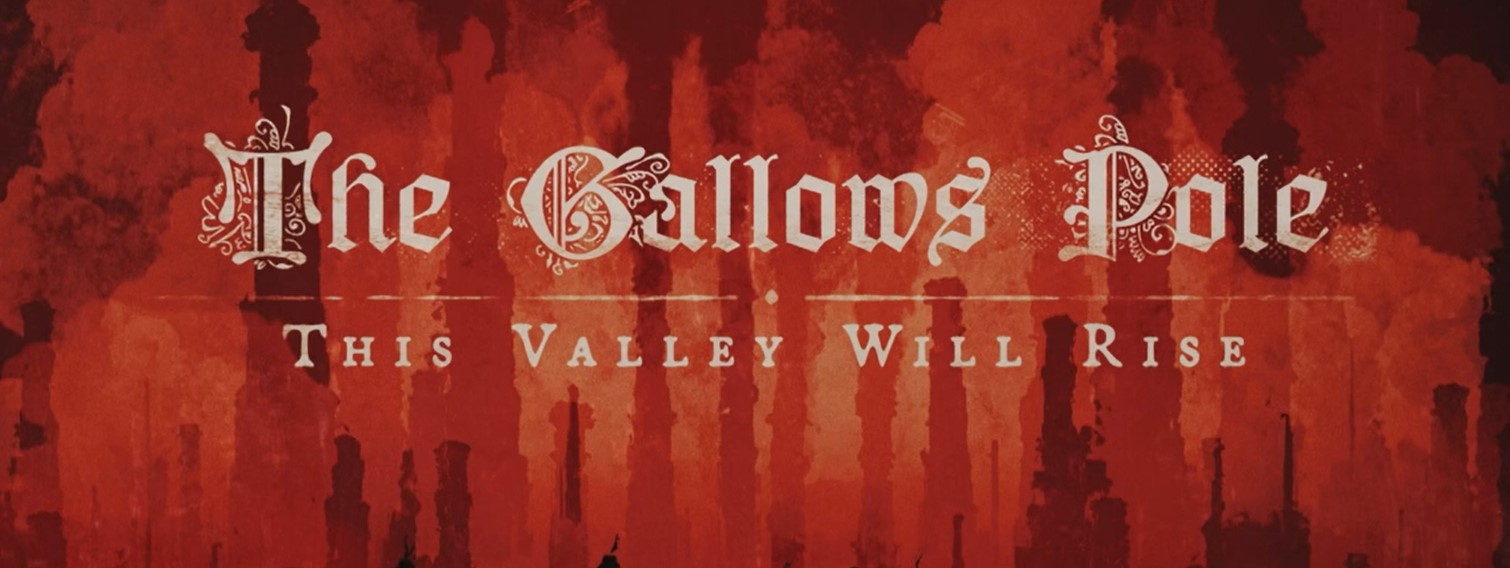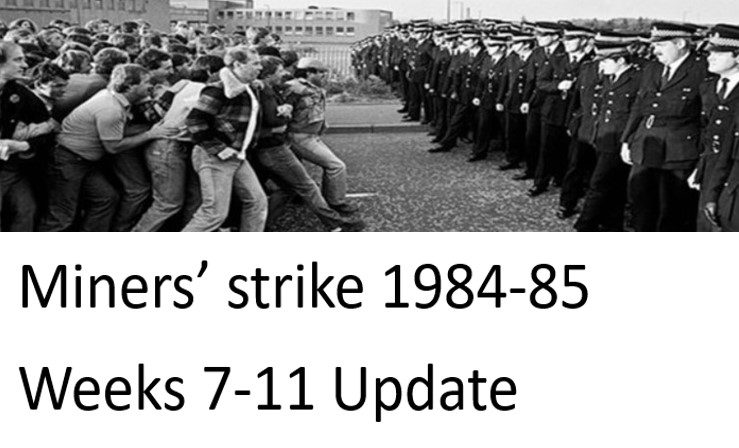Review by Andy Ford, Warrington South
The Gallows Pole is a three-part BBC series set in an 18th century community of Yorkshire weavers. It explores issues of inequality, crime and working class resistance.
The first episode covers the sudden arrival back in Cragg Vale of ‘King’ David Hartley, wounded, and dragging a mysterious bag behind him. As he collapses on the moorland road he is visited by phantasmagoric ‘stag men’, who instruct him to save his home village, which has fallen into destitution as machine weaving in factories takes the place of cottage industry.
Whether the ‘stag men’ are supernatural or a hallucination is never quite clarified but they provide an unsettling, folkloric element to the drama. The method by which he is to save the village is ‘coin clipping’, which means shaving small amounts of gold off golden guineas, melting down the shavings, and using them to create new gold coins – for free!
The enterprise is based on a true crime of the 1760s which by some accounts led to nearly 10% of the coinage of Georgian England being fake, and maybe almost collapsing the British economy.
The chaos of the workers’ lives
The first episode has been described as a chaotic mess by some reviewers but it is more a way for director Shane Meadows (This is England, The Virtues) to show the chaos of the workers lives as they are exploited by the clothiers though the ‘putting out system’ which was described by Karl Marx in Capital, Chapter 14.
This was a period in which textile production by weavers, working in their cottages with raw materials and hand-powered equipment provided by a capitalist, was being undercut and supplanted by textiles produced in huge factories powered first by water, and later by steam. It was the period of the chaotic replacement of handicraft production by mass manufacture with consequent mass impoverishment and misery.
In the second episode, we see David Hartley, now recovered, revealing to his family the machinations of coin clipping. In the end they involve the whole village in the enterprise.

But where are impoverished Yorkshire weavers to obtain gold coins? The answer is…to steal it from the clothier, a hated figure in the village (played by Ralph Ineson – Chris Finch in The Office), because he collects his rents for the looms and weaving equipment, regardless of whether he has given them any work. The workers take the view that it is really their money, obtained by ruthless exploitation.
1,000 guineas delivered
The final episode shows the clothier choosing to join the weavers, providing them with gold coins and splitting the proceeds 50-50. After all, there is money to be made. There is a great scene where the clothier brings 1,000 guineas to an isolated house high up on the moors, guarded by his thugs and tensely watched by the weavers, also armed with a variety of primitive weapons. This first series ends with a joyful scene in which the weavers celebrate their success and rescue from poverty.
In The Gallows Pole, Shane Meadows has put period drama into a new space. As a working class director, he clearly has sympathy with the weavers’ struggle for survival and dignity. He has used some unknown actors – for instance villager Mand is played by Stevie Binns, who works as a finance team leader, and another member of the weaving community, Gwen Hartley, is played by Charlotte Ockleton, whose day job is a hairdresser. Both give fine performances.
No Jane Austen clichés.
Much of the dialogue is improvised, which gives it the freshness of modern working class speech and steers it away from Jane Austen-type clichés. There has been criticism of the swearing, but it is no more than you would hear in a northern town on a Saturday night.
The drama gives agency to the women of the community who take part in all the key activities of the enterprise, enlisting supporters, organising look outs and helping in the ‘persuasion’ of the clothier. There is not one instance of a female character being rescued by a man, nor are they shown cooking or making the tea.
The leading roles are play by Sophie McShera (Daisy in Downton Abbey), as Grace Hartley, with Michael Socha, as David Hartley. It is worth noting that the soundtrack avoids the usual symphonic strings or twee folk songs, but turns instead to modern folk or Swedish punk from Goat. The opening theme is by garage punk band The Mystery Lights.
The Gallows Pole is a fresh way of telling working class history and works on so many levels. It is well worth watching and can be seen on BBC i-player, found here.



